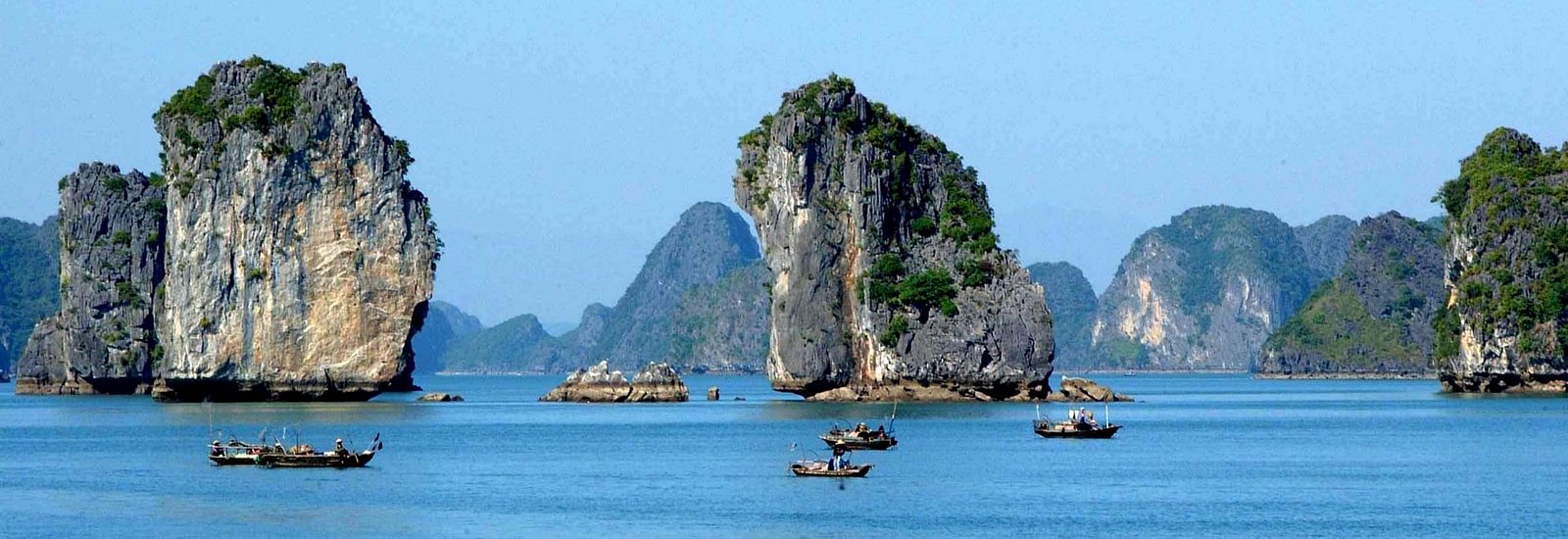Ha Long Bay
In front of the most important port of North Vietnam , Haiphong , the bay of Vinh Ha Long (Halong) is carved on the coast when a dragon shook if immense tail.
The Halong Bay is one of the few places in the world where you can still be lucky enough to recreate their sight with the beautiful silhouette of a Chinese sampan sailing against the sun in waters that seem ripped from a magical and ancient story.
In the province of Quang Ninh (north of Vietnam) bordering China to the north, is one of the wonders of the world: Vinh Ha Long or Ha Long Bay, probably the most fascinating landscape in Vietnam.
A peaceful and beautiful bay covers 4,000 km2 sprinkled by more than 1600.
islands and islets of limestone rock, many of them unnamed. The strange spectacular rock formations that stand out in the sea and the numerous caves have created an enchanted world that remains untouched by the passage of time.
A few years ago, UNESCO declared this bay a World Heritage Site.
Ha Long means “descending dragon”, a name that comes from a local legend. The Jade Emperor ordered a celestial dragon and his offspring to brave an invasion from the sea. The ingenious animals spat out pieces of jade that became wonderful islands and karstic cliffs, and thus managed to sink the enemy ships.
According to other versions, the jewels were pearls and the bay was created when the dragon was thrown into the sea; As it fell, it waved its tail and it hit the earth causing deep valleys and cracks that immediately flooded the sea.
It is said that the dragon still lives at the bottom of the bay.
All known caves have their own legend. Even the modest limestone cliffs receive capricious names from the fishermen; they are names like the Dog or the Turtle or the Toad, imposed by the extraordinary similarity of the dolomitic rock with the forms of these animals.




